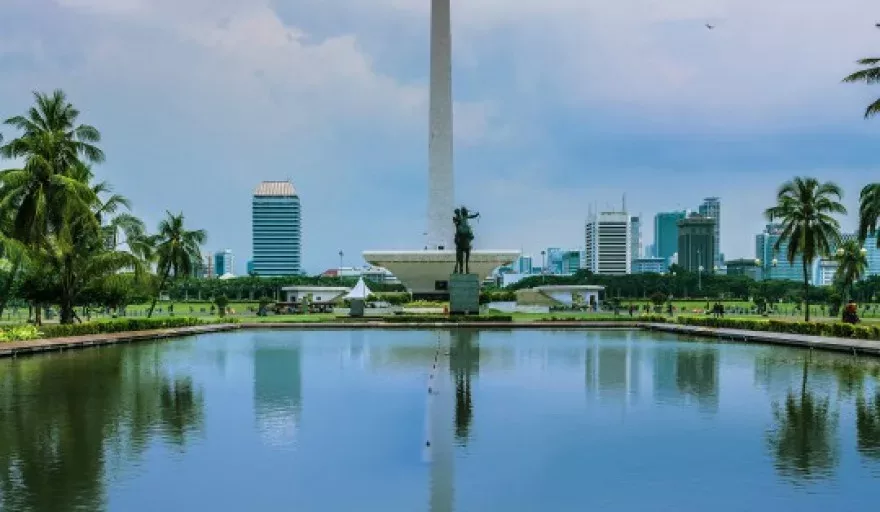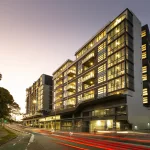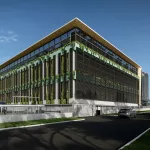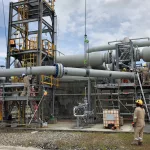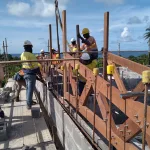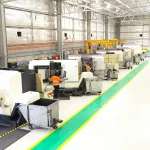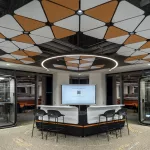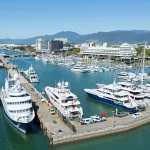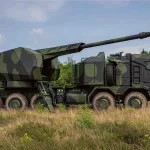For many of the world’s most recognisable cities and most visited destinations, there is a clear intertwining link between tourism and business travel, with the former more often driving the latter. Jakarta is an exception though, thriving as a significant global city being propelled by economic prominence on a global scale.
In APAC specifically, the likes of Kuala Lumpur and Bangkok have long strived to become a traveller’s staple, which in turn has encouraged business and infrastructural development on a secondary note across key parameters. For Indonesia’s capital city and one of the world’s biggest melting pots though, the roles are reversed, and development really does mean business.
In fact, the lines are quite clearly distinguished between the two notions; domestic visitors accounting for tourism and international swathes covering the more prominent business travel element. As the centre of economics, culture and politics in the country though, it is perhaps unsurprising.
The extent of the latter is so extensive in fact, that it now defines modern day Jakarta. Once an indictment of wider Indonesian values and history, the city now is a diverse melting pot consisting of numerous different languages, ethnic groups, religions and nationalities; while the indigenous Betawi influences are more a subtle bonus rather than the overriding lifeblood of the area.
Seen as both a positive and negative depending on what side of the coin you are, quite severe transport challenges through overpopulation can easily be forgotten if a more varied eclectic trip is what you’re looking for. And for associations such as the Jakarta Convention & Exhibition Bureau, efforts are being made to bridge the gap and to make Jakarta as much of a localised example of Indonesian grandeur as it is a showcase of international prestige.
“In five years time if we were to speak about Jakarta as a destination [that is as appealing to tourists as much as it is to the business travel community] then I would expect to be able to say that ‘we’ve made it’,” the enabler states.
FACTS AND FIGURES
Languages: Indonesian, Javanese, Malay
Area: 661 square kilometres
Population (2014): 10 million
Currency: Indonesian rupiah (Rp)
Time zone: UTC+7
Dialling code: +62
Internet TLD: .id
Climate: Tropical monsoon
Highest recorded temperature: 35.6 °C
THE BUSINESS END
For decades now, the current makeup has been an inevitability with numerous business opportunities paving the way for high amounts of migrants to experience Jakarta’s renowned high standards of living and its financial potential.
With Indonesia the largest economy in ASEAN and Jakarta its central nervous system, the likelihood of a prospective visit to the archipelago on your business travels is high.
Your chances are then improved once again if you fall into its primary sectors including banking, trading, finance, manufacturing, pharmaceuticals, the sciences or electronics.
The Head Office of Bank Indonesia is unsurprisingly located in Jakarta’s CBD while the Indonesia Stock Exchange is also housed at its core. And, again, while this doesn’t scream localisation and indigenousness for more purist tourist sects, the potential that it holds for the business travel community is undoubted. And its surrounding infrastructure has responded in kind.
Aside from its museums and eateries which do still retain large facets of Indonesian culture, the city’s general facilitation of overseas visitors focuses more on the luxurious, the enterprising and the formal.
Within the hospitality sector in particular, hotels like Hotel Mulia are continuously frequented by the world’s business elite, while Tauzia Hotels is one of the most significant overseers of the sector’s evolution in ensuring long-term hosting of international executives.
The need to get ahead of the game now is important too, with economic growth still a year-on-year occurrence, in general, and across all specific corporate-related domains.
JAKARTA CONVENTION & EXHIBITION BUREAU
While much of the city’s development in this fashion has been organic and regionally instigated, it has since turned into a concerted target. The Jakarta Convention & Exhibition Bureau (JCNEB) explains that modern day Jakarta is actually a culmination of the Jakarta Provincial Government’s ambition to make the city the premier business events destination in Asia.
“Launched in 1994 during the General Assembly of the 33rd International Congress & Convention Association (ICCA) in Indonesia, JCNEB – then called JCB – was established by a team effort of Jakarta’s meetings industry and the Jakarta Provincial Government who understood the important contribution that business events can bring to the city’s economic growth, international reputation, and the quality of the business environment,” says Chief Executive Officer, Indra Sukirno. “Since then, Jakarta Convention & Exhibition Bureau has developed into becoming a dedicated marketing arm for the city of Jakarta; in particular in business events, and this has brought quite significant convention business to Jakarta – both association and corporate.
“JCNEB has met its key objectives by way of educating the industry about the importance of MICE business in the destination, bringing and creating business events in Jakarta.”
More and more international events are being organised in Jakarta as a consequence and in 2018 the city will be host to the 18th Asian Games which takes the theme: ‘Energy of Asia’.
Sukirno continues: “Of course it is not the only success story, and we have also had some hiccups here and there with infrastructure hindrances – especially traffic and financial challenges caused by the constant governmental failure to fully understand the industry – but being a travel hub, the industry has matured and the activities grow bigger.”
Q&A WITH INDRA SUKIRNO, CHIEF EXECUTIVE OFFICER
To this end, how would you say Jakarta has developed in recent years as a business travel hub and what are the key reasons behind its growing appeal?
Indra Sukirno (IS): Jakarta has proven a lot by introducing and constructing a number of new hotels with meeting facilities and convention centres. Jakarta as the ASEAN hub will have its convention facilities next to the ASEAN Secretariat in the next two years as the latest to accommodate half of the 400 meetings ASEAN holds annually. It will be a significant progression all the way.
Taking a more general industry stance, how would you evaluate the tourism sector in Jakarta now compared to its condition when the Jakarta Convention & Exhibition Bureau began?
IS: There has been a lot of improvement, that’s for sure. But we cannot move fast right now as the Government is trying hard to complete all infrastructure projects; especially traffic. Hopefully it will soon be completed so we can start living as normal again.
What is in store for Jakarta over the course of 2017/18 and beyond to continue the good work already commenced and to enhance its reputation as a tourism and business travel hub further in the future?
IS: We will see more international events and expos coming in the near future. The first ASEAN MICE event, ‘destinASEANplus’, for meetings and events will be launched in April, 2018, as well as the Indonesia Digital Entertainment Festival, the 18th Asian Games, and much more. The ASEAN Convention Centre is also under construction at the moment and new start-up businesses are growing thanks to the millennial society.
From a tourism perspective, ‘diJAKARTA The Map’ – an official city map of Jakarta – will be introduced as of January, 2018 to give first-hand information to every visitor who walks through Soekarno-Hatta International Airport Terminal 3 – Domestic & International. The Map will contain information on ‘where to go’; ‘what to do’; restaurants and nightlife; and important addresses such as related government offices, embassies, and hospitals.
Finally, looking forward, if we were to speak again in three-five year’s time, what progress and development would you expect to be able to report back, both in regards to JCNEB as an entity, and in regards to the business travel industry in Jakarta as a whole?
IS: In five years time if we have to speak about Jakarta as a travel business destination and the Jakarta Convention & Exhibition Bureau, I would say that ‘we’ve made it’, as by then all our public transportation facilities will be completed, making the city more user-friendly and free from traffic jams. Jakarta will have become a better place to live and to do business in.
JCNEB will be the only bureau in Indonesia to have consistently gone with the ups and downs and all the in-betweens; remaining financially sustainable, independent and free, but also forming stronger partnerships and cooperation between Government and private entities.
OUT AND ABOUT
As detailed, your down time in Jakarta won’t necessarily be a culture shock or a ‘whole new world’ but this certainly isn’t to say that it won’t be enjoyable or that the city is lacking options away from the boardroom or convention hall.
In general, the city is midway through a focus to make its surroundings more appealing, its new green initiative intended to provide a calmer and more aesthetically pleasing backdrop to its business-oriented infrastructure.
And for those who do want to explore and search for something a little more intrinsically Indonesian, all is not lost. The Betawi culture may have been watered down by international influence but it’s certainly not gone or forgotten.
Prevalent across the city’s many art and cultural festivals each year, notions of Betawi tradition and history are most commonly found in Jakarta’s cuisine. Perhaps the last, living, protected element of old, more habitual Indonesia in the capital, the city’s eateries serve up an indigenous treat.
Also adopting influences from Malay-Chinese, Sundanese and Javanese preferences, the food stalls, cafes and restaurants that line the city streets are of course complemented by international or westernised options, but should be too tempting to ignore.
And should this whet the appetite for similarly local endeavours then look no further than the city’s numerous landmark buildings and museums.
Merdeka Square and its peripheral palatial buildings are the most iconic in terms of photo opportunities but to truly capture the essence of Indonesia from the enigmatic confines of Jakarta, then the Jakarta History Museum, Museum Nasional, Museum Bank Indonesia and the Jakarta War Cemetery are more poignant must-sees.
OUTLOOK RECOMMENDS
Accommodation
Tauzia Hotels
“Simple, friendly and unique” is how Tauzia describes its business model and hospitality concept, but in truth, you could add keywords such as quality, luxury, sustainability and diverse to the list of accolades that Jakarts’a Tauzia Hotels can boast.
Established in 2001, Tauzia Hotel Management has affirmed itself as an internationally reputed Group comprising a total of around 120 hotels and properties across Indonesia, headed by its Jakarta base. With more than 120 members contributing to this continuous commitment to quality, brands including Preference, HARRIS Vertu, FOX HARRIS, YELLO, POP!, and Tauzia Estate Management form just a small portion of the organisation’s overall contribution to the country’s burgeoning hotel sector.
“Our mission is to create an innovative and eprsonalised line of products for each specific market… [and to] develop an extensive network to the benefit of our employees and clients,” Tauzia affirms on its website.
Hotel Mulia describes its offering as “luxury redefined” and it’s difficult to argue with such a sentiment when exploring its refined facility in Senayan, Jakarta.
“Hotel Mulia Senayan features spacious rooms that radiate an elegant atmosphere, complete with warm hospitality that is unique to Indonesia,” the Company states. And a host of awards back up this claim, the Hotel having been recognised over a number of years for its spacious rooms, its exemplary dining facilities and its luxurious leisure offering.
Museums
Art & Culture
Food & Drink
Nightlife
Leisure
Retail
Flea Market at Jalan Surabaya
TRANSPORT LINKS
Transport is a bit of a sensitive subject in Jakarta at present, as Sukrino alluded to, with the wider evolution of the city somewhat hindered and/or hinged on the ongoing network ‘improvements’ that are being implemented.
‘Muddled’ would be a generous description of the city’s attempts to rectify the situation however, with numerous solutions being initiated over the past few decades, but very few reaching completion or success.
The main issue surrounds the road network with more than 10 million – and counting – vehicles in use around the area each day.
The first proposed solution was to increase the size of the roads and to facilitate such saturation; an attempt that not only failed but that sapped a lot of financial resources that may have otherwise been injected into the development of alternate travel modes.
In summary, the yearly increase in population and road users far outpaces the speed in which Jakarta’s roads are expanding and while a new electronic toll collection in 10 districts is being targeted at stemming the tide, the better option would be to at least take the stress out of your journey.
Plan ahead, optimise the taxi and bus services that are on hand and – during your journey – try to look beyond the gridlock if you choose to gaze out the window instead of at your phone or a book.
It’s not all doom and gloom though! Your initial journey to Jakarta should be seamless, being served by a Soekarno-Hatta International Airport that is also thriving (if not overrun) by the huge numbers entering the city.
Again, to counter the deluge, a fast-track service upon arrival has been introduced to ease the transition from plane, to immigration, to luggage, to customs, to the big wide city.
LANDMARK ATTRACTIONS
Merdeka Square
“The figurative if not the literal centre of Jakarta, Merdeka Square (merdeka means independence) is actually a trapezoid measuring almost one square kilometres. In the 19th century, the Dutch called it Koningsplein (Kings Square) and it became a focal point for the city after they moved the government here from old Batavia (Kota). It’s always had an important role in local life. Today, once you’ve come to terms with the absurd fencing, you’ll find a place where Jakartans come to breathe.” – Lonely Planet
Merdeka Palace
“The Merdeka Palace is one of six presidential palaces in Indonesia. It is located on the north side of the Merdeka Square in Central Jakarta, Indonesia and is used as the official residence of the President of the Republic of Indonesia. The Merdeka Palace is part of the 6.8 hectare Jakarta Presidential Palace Complex, which also includes the Negara Palace, Wisma Negara, Sekretariat Negara, and the Bina Graha building. It is the centre of the Indonesian executive authority.” – Wikipedia
Jin De Yuan
“First constructed in 1650, the Temple called Jin de Yuan for ‘good fortune’ in Chinese and Vihara Dharma Bakti or ‘virtues of the golden temple’ in Indonesian is the oldest in Jakarta. Members of the local Chinese community continue to come to pray here, be they Buddhist, Confucian, or Taoist. A very special atmosphere still reigns in the middle of the offerings, bells, drums, and calligraphy.” – AirFrance
Selamat Datang Monument (Bunaran HI)
“Known as Jakarta’s welcoming statue, Bundaran HI is an impressive sculpture in the heart of downtown. Proudly standing as a welcome to locals and visitors alike, the historic landmark is one of Jakarta’s most prominent attractions and a striking part of the city skyline. Discover the Selamat Datang monument and see why it is one of the city’s best cultural attractions when you stay at Sari Pan Pacific Jakarta.” – Sari Pan Pacific

